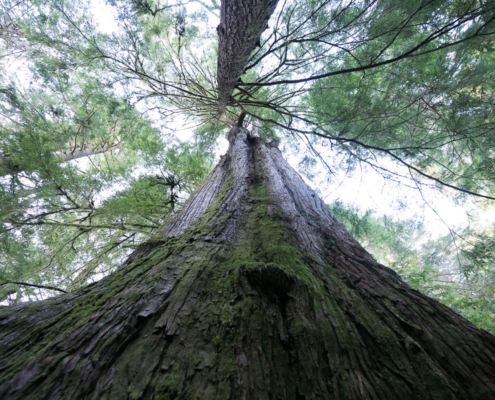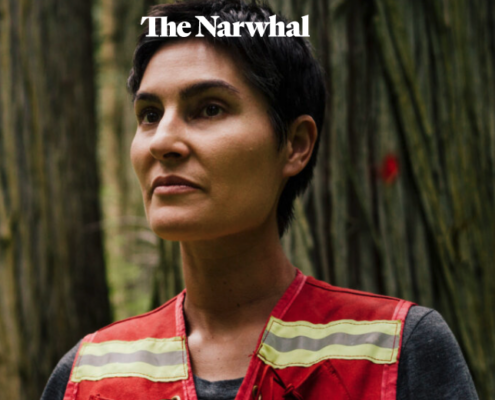
Union of BC Indian Chiefs (UBCIC) and conservation groups call for critical funding for First Nations old-growth protection initiatives- Joint letter
The Union of BC Indian Chiefs (UBCIC) and conservation groups including Ancient Forest Alliance, Endangered Ecosystems Alliance, Sierra Club of BC, Wilderness Committee, and Stand.earth have sent a joint letter to the BC government calling for financing to support First Nations old-growth protection initiatives.

B.C.’s old-growth forest nearly eliminated, new provincewide mapping reveals
Our friends at Conservation North released shocking new interactive maps that illustrate just how little old-growth forest remains across BC after decades of industrial activity.

Forest Selfies Are Helping Save B.C.’s Old-Growth Trees
AFA photographer & campaigner TJ Watt's before and after images of ancient giants in the Caycuse River Watershed garnered massive public attention and spurred thousands to take action for BC's ancient forests. This Outside magazine piece delves into TJ's process behind capturing the beauty and loss of old-growth forests and what's needed to protect them.

Thank you to our recent business supporters!
The Ancient Forest Alliance would like to extend a huge THANK YOU to the following businesses for generously supporting our ancient forest campaign:
Leigh Buchanan, who is donating 50% of the proceeds…
